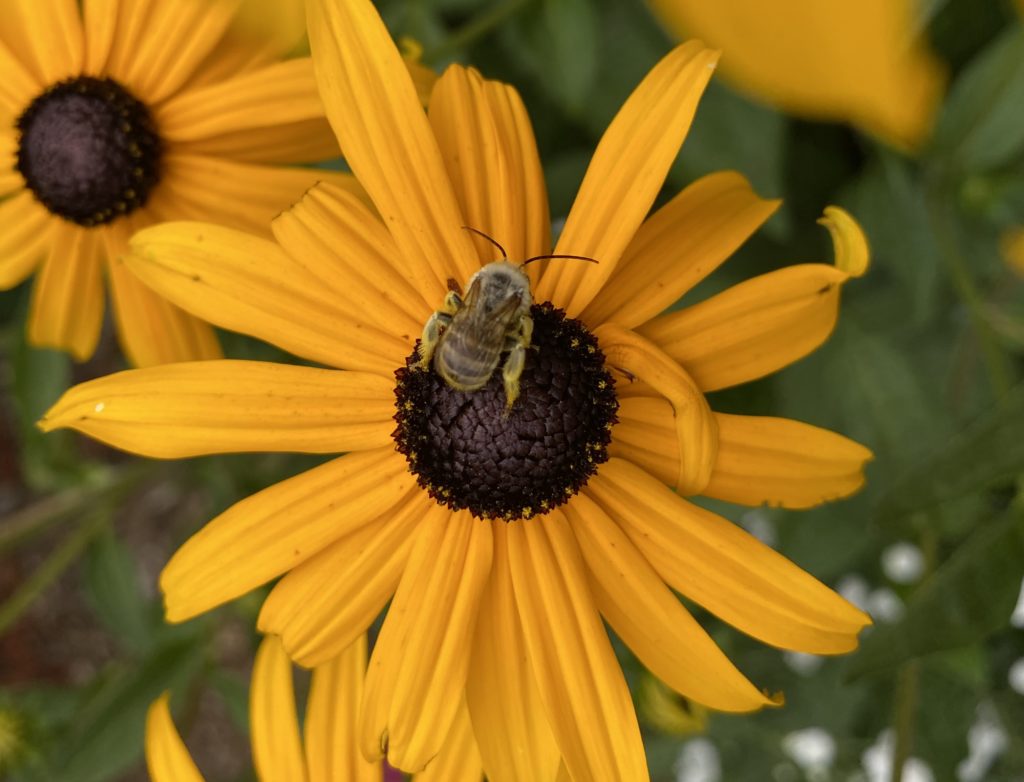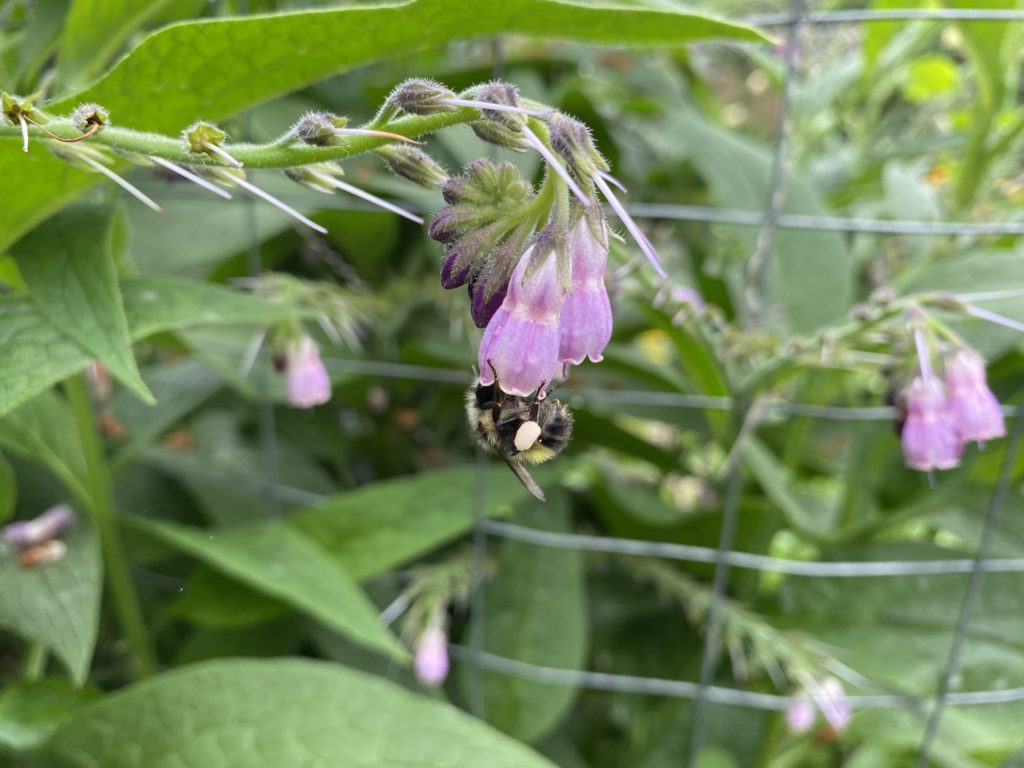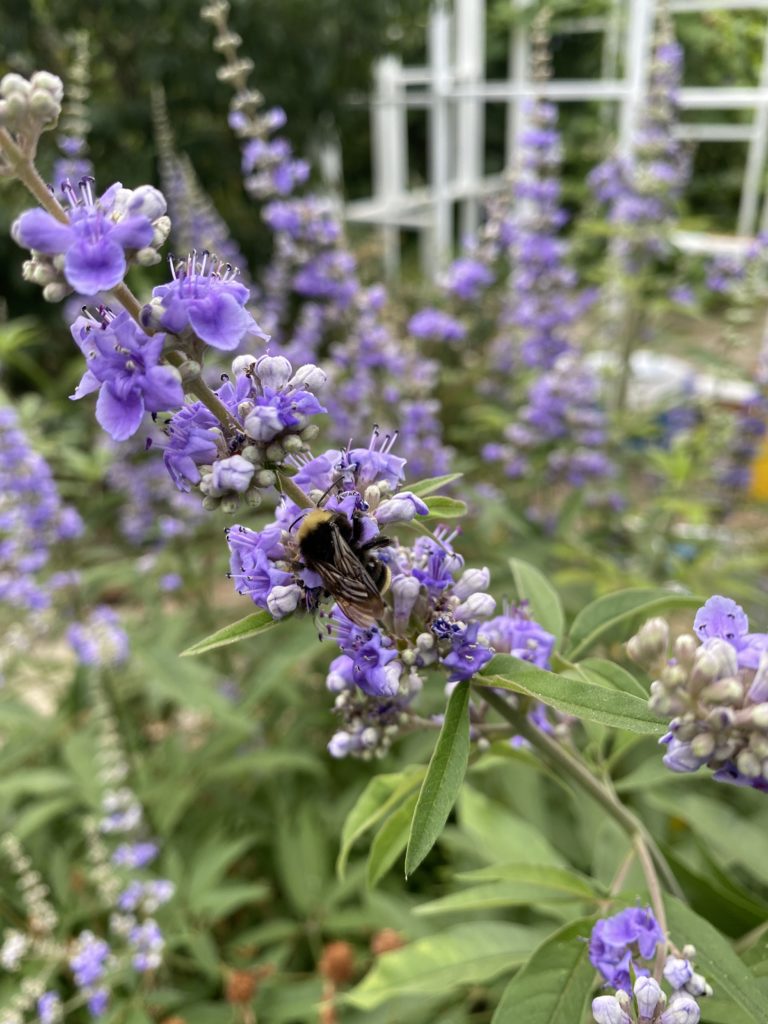5 Ways To Support Native Pollinators

So Much More Than Just Honeybees
Native bees are finally starting to get the attention they deserve. 4000+ species of native bees in the United States were overlooked in the popular consciousness for many years while the plight of honeybees soaked up the spotlight. But recently, more and more folks are catching on to the fact that our native bees are a vital part of the ecosystem, and bring a significant benefit to our home gardens as well.
While there are many species of native bees with unique physical characteristics and behavior, there are many universal ways we can support all of these invaluable pollinators, whether they’re the little solitary emerald green Agapostemon bees, or colonies of big fuzzy bumblebees. Let’s look at 5 ways every person can help out our native bees.
1. Grow A Diversity of Flowers

It has become very trendy to create a false dichotomy between honeybees and native bees. As a beekeeper, I am keenly aware of the importance of our native bees. In fact, the loudest voices for native bee conservation are honeybee keepers. And one key component of caring for our native bees is planting an abundance of forage – enough for our honeybees AND native bees, so they can both feast without competing for sources of nectar and pollen.
Flowers are food for bees. Bees need a variety of nectar and pollen sources growing all season long. The more space (in our own gardens, and in public places) we can dedicate to growing a diversity of flowers, the more we care for our native bees.
Of course, we want to grow native flowering plants from which our native bees have evolved to feed. But native and honeybees will feed from a huge array of flowers. Two things are most crucial:
1.staggering blooms so that we have at least one source of nectar in our garden the entire growing season. My garden starts with rosemary and crocus in February, and I have bee forage blooming all the way into October with late asters and sedums.
2. planting open-faced blooms that bees love, with pollen and nectar easily accessible. Native bees love those “daisy-shaped” flowers like Coreopsis, Enchinacea, and asters. In my garden, the two flowers I see visited by native bees more than any other are Rudbeckia (the first image on this post), and Bee’s Friend.
2. Bee Baths

If you’ve ever left a bucket of water out on a summer day in your garden you may have come back to find a bee or two fallen into it. Anyone with a children’s paddling pool has found bees in or around the pool on a hot day. When landscaping and urban design removes shallow sources of water like puddles and little streams, bees must seek out water where they can.
You see, bees need water to drink, just like we do. Bees that live in colonies (such as bumlebees), will also use water to cool their colonies on hot days. When we provide sources of water, we are caring for and supporting our local bee populations.
Bees can drown in deep water, so if you want to create bee waterers that are shallow and safe for bees to access. Using a shallow dish like a ceramic saucer or shallow birth bath filled with pebbles creates open sources of water with safe landing pads for our pollinators. They can safety perch on the stones and reach the water, without risk of drowning.
(Note: some folks recommend glass marbles, which are pretty and work ok, but keep in mind that transparent marbles can increase the temperature of the water significantly on a sunny day. If you use sea shells instead of pebbles, make sure they are washed thoroughly to remove sea salt.)
3. Put Away the Sprays

It goes without saying on a permaculture blog that insecticides are not the way to create an abundant garden, safe for wildlife. I have spoken extensively about the dangers of broad-spectrum insecticides that conventional gardeners use (often carelessly and thoughtlessly) to “deal” with one or two garden bests.
When you’re using those broad-spectrum poisons to get rid of x beetle or y caterpillar that is nibbing your veggies, it will indiscriminately kill a huge range of insects, including our native bees. We have to look to more intelligent and sustainable garden design methods – like permaculture – that help us produce organic nutrient-rich produce in our gardens and in commercial farms. The cost to our wildlife and to our own resilience is too high for us to continue on in this manner. Indscriminate insecticides are harming us and devastating our native pollinators.
If you’re interested in learning more, you can check out my video on garden myths (including “you need to spray”) here.
4. Creat Habitat

Unlike honeybees, whose colonies are large and obvious, it may not be so readily apparent where our native bees like to sleep or nest.
Male bumblebees sleep in flowers.
Female bumblebees build nests of a few hundred bees in low structures or even in the ground.
Many species of solitary bee (such as sweat bees), nest in holes they dig in sandy soil.
Many other solitary bee species nest in dead plant stems, cracks and crevices of various woody plants.
So how can we preserve and protect the habitat our native bees for rest and reproduction?
-Consider removing your lawn, or at least part of it, in favor of landscaping that includes bare ground for ground nesting bees, wood for carpenter bees, and plenty of flowers for those bees who need a napping spot.
-Set up Bee Hotels.
– Definitely ditch the black plastic mulch, which not only breaks down to create microplastic pollution, but creates impenetrable barriers to nesting habitat for our stingless groundnesting bees.
– If you find established areas of bee habitat in your own yard or surrounding community (like the Tickle Bees of Sabin Elementary), create little fences with signage to educate others while protecting bee habitat from being trampled.
5. Learn About Our Native Bees

I had no idea how fascinating and diverse our native bees are until I became a beekeeper, and started expanding my knowlege in all things Apoidea. I have found bees endlessly fascinating, and it doesn’t matter how many books I read, or how much time I spend observing them in the garden, I am always learning something knew about these delightful pollinators.
If you’d like to start down a fascinating rabbit hole of the 4000+ species of native bees in North America, look no further than Our Native Bees. Paige Embry’s book is a succinct and engrossing dive into a range of bees, the researchers hoping to learn about them, and the conservationists hoping to save them. It is an excellent read, and one I recommend highly if you are just starting to learn about native bees.
Other resources to help you learn more about native bees and how we can care for them:
The Xerces Society
The Bee Conservancy
The USGS Native Bee Inventory
Perhaps we’re enjoying those clumsy fuzzy bumbles bouncing about in the garden. Or we’re almost missing the tiny black ant-like Ceratina bees visiting our asters. Maybe we’re noticing those adorable little longhorn bees with their arcing antennae as they drink from our coneflowers. The more we create the conditions that help native bees thrive, and the more we educate ourselves about our many species of native bees, the more we can enjoy and appreciate their presence in the garden, and the benefits they bring to our garden and community ecosystems.

